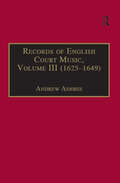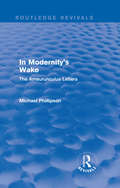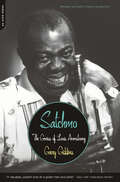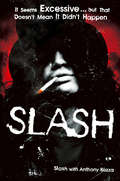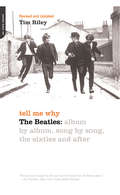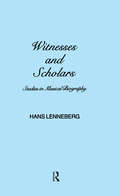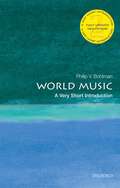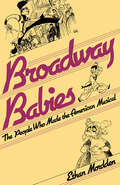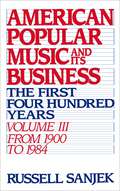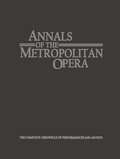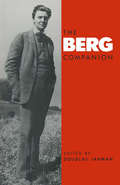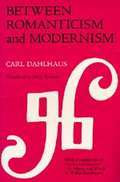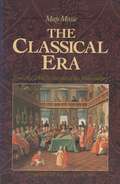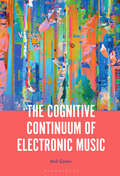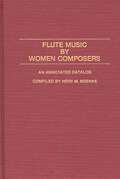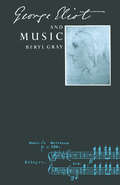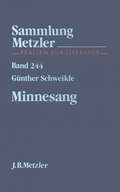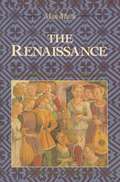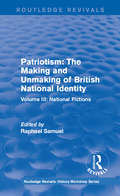- Table View
- List View
Records of English Court Music: Volume III (1625-1649)
by Andrew AshbeePioneering work on the musical material from the archives of the English court was undertaken by Nagel (1894), Lafontaine (1909) and Stokes (in the Musical Antiquary 1903-1913). Records of English Court Music (a series of seven volumes covering the period 1485-1714) is the first attempt to compile a systematic calendar of such references. It aims to revise these earlier studies where necessary, adding significant details which researchers omitted, clarifying the context of documents and substituting current call-marks for defunct references. Volume V is primarily concerned with the post-Restoration years already partially covered in volumes I and II. The material from the Exchequer and Declared Accounts of the Treasurer of the Chamber has been revised to include references to trumpeters and drummers. Other sections are devoted to material outside the Lord Chamberlain's papers: the Signet Office Docquet Books, Secret Service accounts and more from the Exchequer; the Corporation of Musick (controlled by the Court musicians) and to the range of music material from accounts of the Receivers General. Samples from the comprehensive records of the Lord Steward's department (including those of the Cofferer of the Household) are also provided. Andrew Ashbee was the winner of the Oldman Prize in 1987 for Volume II in the series of 'Records of English Court Music', awarded by the UK branch of the International Association of Music Libraries for the year's best book on music librarianship, bibliography and reference.
Routledge Revivals (1989): The Ameurunculus Letters
by Michael PhillipsonFirst published in 1988, this book attempts to tackle the problem of how to write about art, culture, and the issues of postmodernism in a style appropriate to what is being claimed. The letters are written on art’s behalf to a range of institutions and individuals, and have as their recurring concern the relation between art, culture and representation — both art as representation and how art is represented to, and for, the surrounding culture. They explore the context and viability of art through a range of themes, including writing, the aestheticisation of everyday life, style, design pleasure, fragmentation, hyphenation, technology, and the museum — drawing on materials from the visual arts, music, literature, post-structuralism, contemporary criticism, philosophy, and sociology.
Routledge Revivals (1989): The Ameurunculus Letters
by Michael PhillipsonFirst published in 1988, this book attempts to tackle the problem of how to write about art, culture, and the issues of postmodernism in a style appropriate to what is being claimed. The letters are written on art’s behalf to a range of institutions and individuals, and have as their recurring concern the relation between art, culture and representation — both art as representation and how art is represented to, and for, the surrounding culture. They explore the context and viability of art through a range of themes, including writing, the aestheticisation of everyday life, style, design pleasure, fragmentation, hyphenation, technology, and the museum — drawing on materials from the visual arts, music, literature, post-structuralism, contemporary criticism, philosophy, and sociology.
Satchmo: The Genius of Louis Armstrong
by Gary GiddinsGary Giddins has been called "the best jazz writer in America today" (Esquire). Louis Armstrong has been called the most influential jazz musician of the century. Together this auspicious pairing has resulted in Satchmo, one of the most vivid and fascinating portraits ever drawn of perhaps the greatest figure in the history of American music. Available now at a new price, this text-only edition is the authoritative introduction to Armstrong's life and art for the curious newcomer, and offers fresh insight even for the serious student of Pops.
Satchmo: The Genius of Louis Armstrong
by Gary GiddinsGary Giddins has been called "the best jazz writer in America today" (Esquire). Louis Armstrong has been called the most influential jazz musician of the century. Together this auspicious pairing has resulted in Satchmo, one of the most vivid and fascinating portraits ever drawn of perhaps the greatest figure in the history of American music. Available now at a new price, this text-only edition is the authoritative introduction to Armstrong's life and art for the curious newcomer, and offers fresh insight even for the serious student of Pops.
Tell Me Why: The Beatles: Album By Album, Song By Song, The Sixties And After
by Tim RileyA unique combination of musical analysis and cultural history, Tell Me Why stands alone among Beatles books with its single-minded focus on the most important aspect of the band: its music. Riley offers a new, deeper understanding of the Beatles by closely considering each song and album they recorded in an exploration as rigorous as it is soulful. He tirelessly sifts through the Beatles discography, making clear that the legendary four were more than mere teen idols: They were brilliant innovators who mastered an extremely detailed art. Since the first publication of Tell Me Why in 1988, much new primary source material has appeared-Paul McCartney's authorized biography, the Anthology CDs and videos, the complete Parlophone-sequenced albums on CD, the Live at the BBCsessions, and the global smash 1. Riley incorporates all the new material in an update that makes this a crucial book for Beatles fans.
Witnesses and Scholars: Studies in Musical Biography (Musicology)
by H. LennebergFirst Published in 1988. Routledge is an imprint of Taylor & Francis, an informa company.
Witnesses and Scholars: Studies in Musical Biography (Musicology)
by H. LennebergFirst Published in 1988. Routledge is an imprint of Taylor & Francis, an informa company.
World Music: A Very Short Introduction (Very Short Introductions)
by Philip V. BohlmanThe term 'world music' encompasses both folk and popular music across the globe, as well as the sounds of cultural encounter and diversity, sacred voices raised in worship, local sounds, and universal values. It emerged as an invention of the West from encounters with other cultures, and holds the power to evoke the exotic and give voice to the voiceless. Today, in both sound and material it has a greater presence in human societies than ever before. The politics of which world music are a part - globalization, cosmopolitanism, and nationalism - play an increasingly direct role in societies throughout the world, but are at the same time also becoming increasingly controversial. In this new edition of his Very Short Introduction, Philip Bohlman considers questions of meaning and technology in world music, and responds to the dramatically changing political world in which people produce and listen to world music. He also addresses the different ways in which world music is created, disseminated, and consumed, as the full reach of the internet and technologies that store and spread music through the exchange of data files spark a revolution in the production and availability of world music. Finally, Bohlman revises the way we think of the musician, as an increasingly mobile individual, sometimes because physical borders have fallen away, at other times because they are closing. ABOUT THE SERIES: The Very Short Introductions series from Oxford University Press contains hundreds of titles in almost every subject area. These pocket-sized books are the perfect way to get ahead in a new subject quickly. Our expert authors combine facts, analysis, perspective, new ideas, and enthusiasm to make interesting and challenging topics highly readable.
Broadway Babies: The People Who Made the American Musical
by Ethan MorddenVividly recreating the unique pleasure of experiencing a song-and-dance show, Broadway Babies spotlights the men and women who made a difference in the development of American musical comedy. Mordden's account features such show people as Florenz Ziegfeld, Harold Prince, Bert Lahr, Gwen Verdon, Angela Lansbury, Victor Herbert, Liza Minnelli, and Stephen Sondheim, and such musicals as Sally, Oh Kay!, Anything Goes, Show Boat, Oklahoma!, Follies, Chicago, and countless others. While theatrical historians traditionally have emphasized the role of the authors of musicals, Mordden also examines the personal styles of the directors, choreographers, and producers, in order to demonstrate not only what the musical became but what it was. The volume includes an extensive discography--the first of its kind--which offers a virtually self-contained history of recorded show music.
American Popular Music and Its Business: The First Four Hundred Years, Volume III: From 1900-1984
by the late Russell SanjekThis volume focuses on developments in the music business in the twentieth century, including vaudeville, music boxes, the relationship of Hollywood to the music business, the "fall and rise" of the record business in the 1930s, new technology (TV, FM, and the LP record) after World War II, the dominance of rock-and-roll and the huge increase in the music business during the 1950s and 1960s, and finally the changing music business scene from 1967 to the present, especially regarding government regulations, music licensing, and the record business.
Annals of the Metropolitan Opera: The Complete Chronicle of Performances and Artists (Monograph Ser.)
by Gerald FitzgeraldBerg Companion
by Douglas JarmanBy bringing together the most recent scholarship, this book sheds new light on Berg's life and music. The three main sections are each devoted to a particular genre. The first essay in each section surveys Berg's development within the genre concerned, whilst the subsequent chapters discuss particular works in more detail. An introductory section to the book sets Berg's music in the context of other artistic and musical developments of the period from 1890 to the 1930s.
Between Romanticism and Modernism: Four Studies in the Music of the Later Nineteenth Century (California Studies In 19th-century Music #1)
by Carl Dahlhaus Mary WhittallCarl Dahlhaus here treats Nietzsche's youthful analysis of the contradictions in Wagner's doctrine (and, more generally, in romantic musical aesthetics); the question of periodicization in romantic and neo-romantic music; the underlying kinship between Brahms's and Wagner's responses to the central musical problems of their time; and the true significance of musical nationalism. Included in this volume is Walter Kauffman's translation of the previously unpublished fragment, "On Music and Words," by the young Nietzsche.
The Classical Era: Volume 5: From the 1740s to the end of the 18th Century (Man & Music)
by Professor Neal ZaslawFrom the series examining the development of music in specific places during particular times, this book looks at the classical period, in Europe and America, from Vienna and Salzburg to the Iberian courts and Philadelphia.
The Cognitive Continuum of Electronic Music
by Anil ÇamciThe electronic medium allows any audible sound to be contextualized as music. This brings about unique structural possibilities as spectrum, dynamics, space, and time become continuous dimensions of musical articulation. What we hear in electronic music ventures beyond what we traditionally characterize as musical sound and challenge our auditory perception on the one hand and our imagination on the other. Based on an extensive listening study conducted over four years, this book offers a comprehensive analysis of the cognitive processes involved in the experience of electronic music. It pairs artistic practice with theories from a range of disciplines to communicate how this music operates on perceptual, conceptual, and affective levels. Looking at the common and the divergent ways in which our minds respond to electronic sound, the book investigates how we build narratives from of our experience of electronic music and how we situate ourselves in them.
Flute Music by Women Composers: An Annotated Catalog (Music Reference Collection)
by H Alais BoenkeFor the flutist wishing to perform music composed by women, this annotated catalog will come as a most welcome addition to the numerous flute bibliographies now available. Boenke has spent four years gleaning all possible sources to come up with several hundred listings of composers from three centuries and 40 different countries. When the information is available, she lists publisher and the OCLC system record number after the routinely listed title and instrumentation. In addition to the alphabetical listing are indexes for instrumentation, title, publisher, and composer. A short list of sources is heavy on LC and NUC catalogs as well as the several standard sources on women in music. This volume could serve as an example for instrument-specific music bibliographies. For flutists it is priceless. ChoiceThis book, an alphabetical listing of flute music by women composers, provides ready access to flute music that is published or available in manuscript form. Unlike any previous handbook of the flute repertoire, it is devoted entirely to the works of women, the vast majority of whom are not mentioned in the standard catalogs of flute literature. A carefully compiled study, the volume examines the quantity, variety, and scope of women's work in this genre and includes composers from more than forty countries, spanning three centuries. It contains works for solo flute, duets, flute and piano, concertos, woodwind quintets, other chamber ensembles, or any work that employs soloistic use of the flute. It also provides biographical information on the composers, publishers, availability of works, and annotations on the works themselves. All compositions are indexed by title and by instrumentation, and publishers and contemporary composers are listed with current addresses, to facilitate the ordering of music.The first published volume of its kind, this unusual work will draw attention to valuable and unknown repertoire in this genre and provide the opportunity for women's works to be heard more often. It will be useful in all university music libraries and conservatories, and it will be a valuable resource for professional flutists, teachers of flute, and researcher in women's studies.
George Eliot and Music
by Beryl GrayA treatise which explores the extent to which music played a role in the literary works of George Eliot. The author concentrates principally on "The Mill on the Floss", "Middlemarch" and "Daniel Deronda" and argues that music was an indispensable component of each of these works.
Pietro Von Abano (Selected Works of Louis Spohr, 1784-1859)
by Clive BrownVolume 3 of the SELECTED WORKS OF Louis Spohr 1784-1859- Pietro von Abano. At about this time one of his pupils, the twenty-three-year-old Carl Friedrich Curschmann, who had ambitions to compose an opera, showed Spohr a libretto that had been adapted from Ludwig Tieck's novel Pietro von Abano oder Petrus Apone, eine Zaubergeschichte (Breslau 1825) by the Kassel lawyer and poet Carl Pfeiffer. Spohr was immediately impressed by the libretto and, having dissuaded Curschmann from going ahead with the project, probably on the grounds that he was too inexperienced for such a major undertaking, he came to an agreement with Curschmann and Pfeiffer that he should set it himself. Including the plot, script and screenshots of the original music documents.
Pietro Von Abano (Selected Works of Louis Spohr, 1784-1859 #3)
by Clive BrownVolume 3 of the SELECTED WORKS OF Louis Spohr 1784-1859- Pietro von Abano. At about this time one of his pupils, the twenty-three-year-old Carl Friedrich Curschmann, who had ambitions to compose an opera, showed Spohr a libretto that had been adapted from Ludwig Tieck's novel Pietro von Abano oder Petrus Apone, eine Zaubergeschichte (Breslau 1825) by the Kassel lawyer and poet Carl Pfeiffer. Spohr was immediately impressed by the libretto and, having dissuaded Curschmann from going ahead with the project, probably on the grounds that he was too inexperienced for such a major undertaking, he came to an agreement with Curschmann and Pfeiffer that he should set it himself. Including the plot, script and screenshots of the original music documents.
The Renaissance: From the 1470s to the end of the 16th century (Man And Music Ser.)
by Iain FenlonFrom the series examining the development of music in specific places during particular times, this book looks at European countries at the time of the Renaissance, concentrating on Italy. It is to be published in conjunction with a television series.
Routledge Revivals: Volume III: National Fictions (Routledge Revivals: History Workshop Series)
by Raphael SamuelFirst published in 1989, this is the third of three volumes exploring the changing notions of patriotism in British life from the thirteenth century to the late twentieth century and constitutes an attempt to come to terms with the power of the national idea through a historically informed critique. This volume studies some of the leading figures of national myth, such as Britannia and John Bull. One group of essays looks at the idea of distinctively national landscape and the ways in which it corresponds to notions of social order. A chapter on the poetry of Edmund Spenser explores metaphorical representations of Britain as a walled garden, and the idea of an enchanted national space is taken up in a series of essays on literature, theatre and cinema. An introductory piece charts some of the startling changes in the image of national character, from the seventeenth-century notion of the English as the most melancholy people in Europe, to the more uncertain and conflicting images of today.
Routledge Revivals: Volume III: National Fictions (Routledge Revivals: History Workshop Series)
by Raphael SamuelFirst published in 1989, this is the third of three volumes exploring the changing notions of patriotism in British life from the thirteenth century to the late twentieth century and constitutes an attempt to come to terms with the power of the national idea through a historically informed critique. This volume studies some of the leading figures of national myth, such as Britannia and John Bull. One group of essays looks at the idea of distinctively national landscape and the ways in which it corresponds to notions of social order. A chapter on the poetry of Edmund Spenser explores metaphorical representations of Britain as a walled garden, and the idea of an enchanted national space is taken up in a series of essays on literature, theatre and cinema. An introductory piece charts some of the startling changes in the image of national character, from the seventeenth-century notion of the English as the most melancholy people in Europe, to the more uncertain and conflicting images of today.
